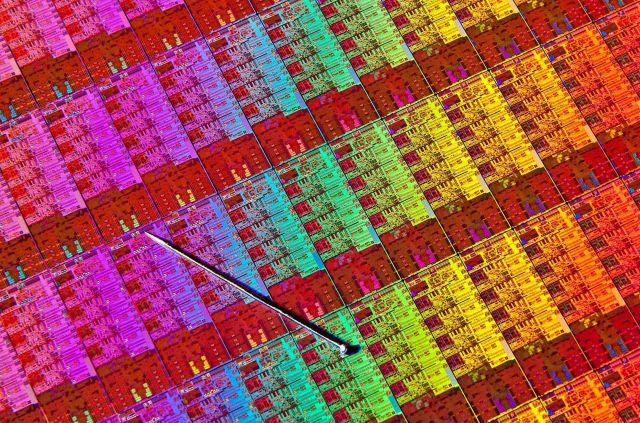Much has changed and over the time the computer chip as we know it is becoming more and more important. With internet of things on the horizon and electronics becoming more and more integrated in our daily lives, it is important that chips continue to improve in performance and size.
So what is Moore’s Law? Moore’s Law is the observation of the number of transistors in a chip doubles every approximately two years. (Wikipedia, 2016) So in short, this “law” is just observations and predictions and dates from 1965. It is remarkable that this is law is accurate for over fifty years.


The reason why Moore’s Law is so important is because it is highly related to the pace of which performance in a chip is being developed. It being used as a guideline for developing better semiconductors (chips) every approximate two years. Many major companies such as Intel and Nvidia have been using this law as a guideline. (Intel.com, 2016)
Moreover, the performance of a chip is also related to the number of transistors a chip has. Also the size of a chip can decrease whenever chips are becoming more powerful. This is really useful for the Internet of Things.
But nowadays it is increasingly difficult to keep up with Moore’s Law since it is becoming more and more costly for companies to develop a smaller die size. Further improvements are increasingly costly and physically harder to implement. Thus the pace of Moore’s Law is slowing down and in a way dying. Intel actually even stepped off the pace set out by this Law. (MIT, 2016)

So what will be next? If Moore’s law is running out, does this mean the pace of which semiconductors are being developed is going to be halted drastically?
Probably not, I would think. Although highly costly, alternatives could still allow further improvements by using a different material. (Arstechnica.com, 2016) Or a very disruptive innovation, perhaps quantum computing might be a solution.
Sources :
http://arstechnica.com/gadgets/2016/07/itrs-roadmap-2021-moores-law/
http://www.intel.com/content/www/us/en/silicon-innovations/moores-law-technology.html
https://en.wikipedia.org/wiki/Moore%27s_law
https://www.technologyreview.com/s/601102/intel-puts-the-brakes-on-moores-law/

